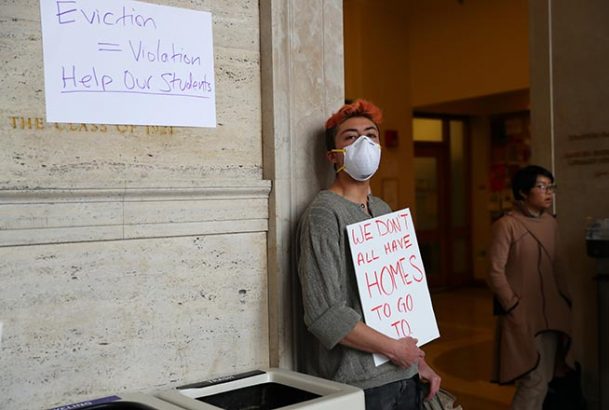Whitmire: The Wave of Higher Ed Shutdowns Threatens American’s Progress in Getting Low-Income, First-Generation Students to and Through College
ByRichard Whitmire
Just weeks ago, Brandy Caldwell was finishing up her senior year at Boston’s Brandeis University when she got the notice: The coronavirus was forcing a campus shutdown in two days.
For most students, that meant a hasty packing up and a quick car trip home to their parents. But for Caldwell, 22, it wasn’t that easy.
“I am a homeless college student. I went into foster care when I was 5 years old and aged out when I was 21,” Caldwell said. “Technically, I don’t have a place to go. I have no permanent address. Where was I going to go?”
From a public health perspective, the wave of short-notice college shutdowns may make sense. But for thousands of first-generation college-goers — and there are far more of them than ever — the closure of more than 200 schools across the U.S. presents special emergencies. How do I pay for a plane ticket home? How will I replace the income from a campus work-study program? If I can’t afford to return to my four-year college, how will enrolling in a local community college affect my life plans?
The challenges appear serious enough to threaten the fragile progress the nation has made in recent years in getting more low-income students both enrolled in college and earning degrees — progress I laid out in my recent book, The B.A. Breakthrough: How Ending Diploma Disparities Can Change the Face of America.
In that book I describe a college world foreign to most middle-class families, a world where students are one car repair away from dropping out. I tell the story of a student from a small high school in the South arriving at a chilly Pennsylvania campus without sufficient warm clothing. She became so isolated she didn’t seek outside help and almost flunked out her first semester. Finally, the principal of her high school learned of her dilemma and bought her a warm coat and some long underwear.
How many fragile students are buffeted by sudden changes such as a campus shutdown? A 2018 report from Georgetown University’s Center on Education and the Workforce concluded that 70 percent of full-time college students hold down jobs.

MIT graduate student Aubrey Simonson protests after students were asked to move out of their dorms by March 17. (Maddie Meyer/Getty Images)
And the campus poverty level, which usually translates into worries about being able to afford meals, is far higher than most people imagine. A 2019 survey out of Temple University laid out the problem. An excerpt from that report:
During the 30 days preceding the survey, approximately 48% of students in two-year institutions who responded to the survey experienced food insecurity, with slightly more than 19% assessed at the low level and slightly more than 28% at the very low level of food security. Approximately 41% of students at four-year institutions who responded to the survey experienced food insecurity, with slightly less than 18% assessed at the low level and slightly less than 24% at the very low level of food security. More than half of survey respondents from two-year institutions and 44% of students from four-year institutions worried about running out of food. Nearly half of students could not afford to eat balanced meals.
For Caldwell, a graduate of a KIPP charter high school in Washington, D.C., the first worry was “Where do I go?”
“I called my KIPP Through College adviser,” Caldwell said, “and she told me to calm down, we can figure it out.”
Like most top charter school organizations, KIPP maintains a staff that tracks their alumni in college. In KIPP’s case, that’s 15,000 students, almost all of them low-income and minority. Caldwell’s adviser, Kamilah Holder, advised her to ask Brandeis for the same accommodation afforded to international students: dorm space during the shutdown. Caldwell did, and that was granted.
With most of the Brandeis student cafeterias closed, the next worry was food. Caldwell also appealed to KIPP for grocery help.
As with other charter networks, KIPP does special fundraising for emergencies such as this. Within a few days, KIPP raised more than $135,000 and started processing claims. That total has since grown to $148,778, with the network to date giving out 294 grants at an average amount of $247 per grant. For its alumni, 44 percent of those grants went to food assistance, 23 percent to computer and tech needs and 18 percent to transportation.
“I got a response within 20 minutes, and 20 minutes after that I got money through PayPal,” she said “Kamilah is like my mom; I love her.”
Read the full article here
